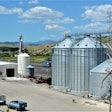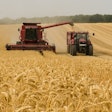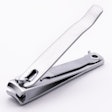
Purchasing a new grain bin is not a small decision. Sifting through the sizes and types of bins, along with accessories and features, isn’t always cut and dry. Additionally, comparing bin to bin can be a tall order if you haven’t done your research or aren’t familiar with typical bin components or construction.
You want to be sure your final decision matches your grain handling needs and gives you the best return on investment. Here are a few key aspects to bear in mind as you go about selecting your storage system.
First, minimizing costs by building small isn’t always a good option. Without enough bin space, a grain bin is likely to become your bottleneck and limit your profit potential. You can easily and accurately calculate the bushels you will need to store by multiplying acreage by average bushels. Again, leave room for future growth within the bin, or make sure there’s room on the site for an additional bin if necessary.
As with any major purchase, the decisions don’t stop at the size and location of the bin. Just like when you’re buying a home, car or tractor, there are other components, accessories and construction elements to consider.
The build, from top to bottom
Like anything that spends its life in the great outdoors, bins need to endure the heat of summer and the cold of winter. To withstand hail, snow, rain and high winds, they have to be built solid or they simply won’t stand the test of time.
Roofs
Roofs take the harshest beating. In fact, 85% of bin damage involves the roof. Damage can include the roof caving in, blowing off or vent holes tearing. A strong roof is important in several ways. For example, if a sidewall begins to cave in and the bin has a strong roof, it’s easy and inexpensive to put a new sheet in. In the same scenario, a weaker roof will likely cave in along with the sidewall and cause an expensive, prolonged repair.
The design and construction of the roof are critical. Evaluate what each manufacturer offers for roof ribs and framing. Look for elevated roof ribs, up to 3.5 inches, that serve as rafters for the roof structure. Keep in mind roofs manufactured with additional breaks (or bends) in the metal have more strength.
Fastening
Some manufacturers only use expansion bolts in the roof-ring construction. Though these bolts are nearly unavoidable in the industry, the roof ring can eventually twist and pop out of place. Therefore, when fastening a wind ring to the roof, be sure the ring is fastened with wind ring clamps at each roof rib, as well as clamping the wind ring together. Clamps are a stronger, more secure option because the wind ring acts as one structural unit.
Floors
The fabrication of the floor also can make a big difference in terms of the bin’s overall strength. Floor supports come in several different shapes and styles, so similar to the roof, look for floor supports with additional breaks in the metalh. Floor supports can be up to four times stronger than others made of the same material based on how they are constructed.
Base anchor
Base anchors secure the bin to the concrete, and anchors hold the bin down more securely. Extra strength in the bottom ring is a huge advantage, as it’s often a weaker point on bins. Some manufacturers build their bins with anchors as tall as 44 inches, which covers the entire bottom ring. The result is bottom ring strength equivalent to a ring that is two gauges thicker.
Poles apart
Price is always a consideration when shopping for a bin, but to truly understand the price and make an apples-to-apples comparison, there are some details you need to consider carefully.
Narrow core vs. wide core
Two companies might quote the same size and diameter bin, but their capacities are off by 10,000 bushels and the prices vary just as much. When you investigate further, you might find one company quoted a narrow core and another priced a wide core.
So what’s the difference? Narrow core bins have more ribs and more ridges for the grain to sit on. Because of this, there is more down pressure on the bin when the grain is flowing down. A wide core bin has fewer ridges with less area for grain to sit on, so there is less pressure when grain is flowing in.
Unloading
A bin’s unloading system is one of the most important parts of grain equipment, and styles and options vary greatly. For example, an 8-inch unload tube is capable of releasing 2,500 bushels/hour. A U-Trough design releases more than twice as fast, or up to 6,000 bushes/hour. Be aware that the differences in cost and design are substantial. In addition, the unload tube forces grain through a tube that often damages the kernel, whereas the U-Trough and power sweep allow a free flow to help maintain the kernel condition. Be aware that the differences in design and cost are substantial.
Fans
Even airflow through the grain bin is essential for proper cooling, storage and air drying. Two types of fans are available. Vane-axial fans are better adapted to shallow-depth bin drying systems. They are generally lower in initial cost but are louder than centrifugal fans. Centrifugal fans are advantageous when relatively high air volumes need to be pushed through deep grain levels (12 to 20 feet) and are less expensive to operate.
Even the variance of the fans’ horsepower can be significant enough to become a major factor in your selection. Ask your grain bin manufacturer for an airflow chart to demonstrate the effectiveness of varying fan systems. When air drying doesn’t suffice, a high-quality heater can dramatically increase drying speed when combined with a high-performance fan and stirring machine.
Doors
Note that grain bin doors also vary in size, sometimes up to a few feet. A larger door provides convenient access for bin maintenance. Most manufacturers offer 44-inch, one-ring doors. Larger doors — up to 66 inches tall — are available.
Keeping grounded
The safest place is on the ground. Naturally, any time you can avoid climbing to the top of the bin you reduce the risk of injury. Implementing a number of features on your grain bin will reduce the climbs necessary, and make the necessary ones safer:
Remote lids
Remote-controlled lids keep workers off of the bin roof by enabling them to open and close the bin from the ground. These are commonly standard on 15-foot to 27-foot roofs and are available as an option on larger diameter bins, as well.
Stairs
Bin stairs are a safer alternative to a ladder. Look for wider staircases and bigger platforms, which might not seem important until you’re 150 feet high on a windy day. To further increase safety at extreme heights, manufacturers have begun offering peak walk-arounds and roof stairs with handrails to prevent injury or falls. Again, with the added security, these accessories pay for themselves repeatedly.
Grain gauge
A grain gauge is a cost-effective way of telling when your bin is full — or even how full it is if gauges are placed on multiple rings. This can also prevent overfilling.
There is no shortage of aspects, components and fabrication elements to consider when making a grain bin purchase. From scouting the site to tightening the last bolt, remember to plan for the future to avoid disappointment. But there is one last thing to keep on the forefront — the warranty.
Warranty
Grain bins should last 40 to 50 years with very little maintenance. Manufacturers that build high-quality, long-lasting products offer lifetime warranties on certain parts, like the roof or the bottom ring. The warranty provides the peace of mind of knowing they’ve chosen a quality product, and if there are any problems, the manufacturer will be there to take care of them.





















